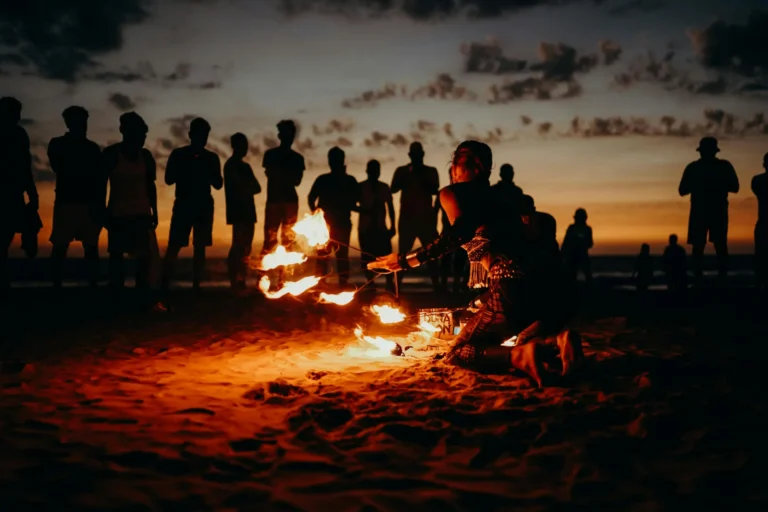Tucked away in the heart of Kerala’s capital, Thiruvananthapuram, lies a place that seems to stand still in time. The Padmanabhaswamy Temple isn’t just another spiritual stop on a pilgrim’s map. It’s a labyrinth of legends, devotion, and an unfathomable treasure.
Getting caught up in the buzz around gold and diamonds is easy. Yes, the temple is unimaginably wealthy. But there’s more to this story than vaults and valuables. Walk through its towering gopuram, and you’re stepping into centuries of history and sacred silence.
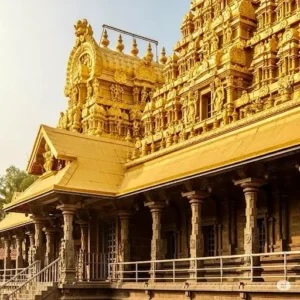
Table of Contents
ToggleHistory and Origins of Padmanabhaswamy Temple
How Old Is Padmanabhaswamy Temple?
The temple didn’t just appear one day. It evolved over centuries and was shaped by rulers, sages, and the people of Kerala. Some say its origins go back to 500 BCE. Others believe it’s been around longer. Regardless, the temple has always been central to the soul of Thiruvananthapuram.
The deity, Lord Padmanabha, an incarnation of Vishnu, lies on a serpent bed. His posture is calm, eternal, and strangely comforting.
The Travancore royal family didn’t just visit this temple, they served it. They called themselves servants of the Lord, not kings. Even today, their connection to the temple remains deeply rooted.
Connection With the Travancore Royal Family
In 2011, the world turned its gaze to the Padmanabhaswamy Temple. Not because of a festival. But because a door was opened. Behind it? Mountains of gold. Literally. Golden idols, ancient coins, and precious stones have more than $20 billion in value. And that’s just what was counted.
But there’s one door, Vault B, that’s still sealed. Rumors swirl around it. Some say it’s cursed. Others believe divine beings guard it. The truth? No one knows.
Vault B is more than a metal door. It’s a symbol of mystery. People pray near it. Some even fear it. And the government? They’ve left it untouched at least for now.
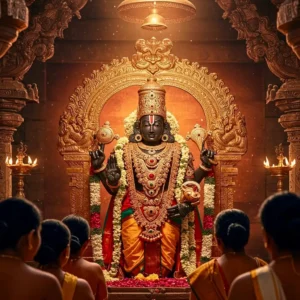
The Legend of Lord Padmanabha
Five of the six vaults in the temple have been accessed. Each one tells a different story of ancient trade, royal donations, and divine offerings. There were gold pots, heavy necklaces, emerald-studded thrones, and even ceremonial attire made from silk and gold threads.
Stories of Gold, Gems, and Sacred Objects
Experts were fascinated by the quantity and craftsmanship. Some items were hundreds of years old, while others looked like they were straight from mythological stories. The deeper people looked, the more questions they had.
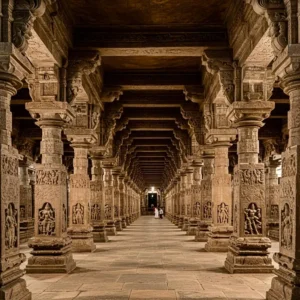
Best Time to Visit Padmanabhaswamy Temple
Kerala is hot and humid most of the year. But if you’re planning a trip to the temple, aim for October and March. The weather cools down, and the air feels lighter. Festivals during this period also add charm, where the temple lights up with processions and prayers.
Mornings are best for visiting. The temple opens early, and you get a moment of stillness if you reach it before the crowd builds up. That silence inside the sanctum where time seems frozen is something you won’t forget.
Avoid summer, especially April and May, unless you enjoy sweating through your shirt. Monsoons bring a different vibe, with the rain adding a touch of drama. But travel can be tricky due to flooding and delays.
Dress Code & Entry Rules: What You Need to Know
Padmanabhaswamy Temple takes tradition seriously. There’s no bending the rules here. Men must wear a mundu, basically a white dhoti. There are no shirts or vests. You walk in bare-chested, like it’s been done for centuries. Women are expected to wear sarees or salwar suits with a dupatta. There are no jeans or leggings.
Western clothing? Not even an option.
Also, non-Hindus are not allowed inside the sanctum. The rule is strict. Guards at the entrance check everyone. Mobile phones, cameras, and even handbags must be left outside. It might sound inconvenient, but the energy and peace make up for it once inside.
Shoes? Leave them far behind. This isn’t just a building. It’s sacred ground.
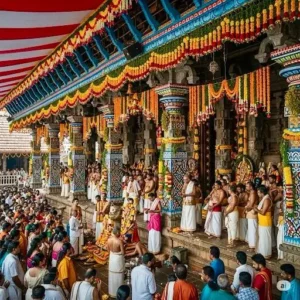
Rituals of Padmanabhaswamy Temple
Unlike many modern temples, this one hasn’t updated itself to keep pace. Rituals here are long, deep, and meaningful. Conch shells, temple bells, and Vedic chants fill the air from dawn to dusk.
The most popular time for darshan is during Ushapooja, the early morning offering. You’ll see priests gliding through the temple, carrying lamps and flower offerings. The aroma of camphor, ghee, and sandalwood sticks to your skin.
Everything in this temple moves with rhythm. There’s no rush. The pace is deliberate, almost meditative.
Visitor Experience and Local Atmosphere
You could walk past this temple without knowing its story. It hides behind the busy streets of the city. But those who step inside understand what makes it special.
It’s not just about the gold or the vaults. It’s about the feeling. That moment when you stand before the deity and feel small, yet strangely whole. That moment when the priests chant ancient mantras and the sound fills your chest like a heartbeat.
This isn’t just a temple. It’s an experience. One that blends power, peace, and mystery in ways words often fail to capture.
What the Future Holds
Will the unopened vaults be revealed? No one knows. There are legal battles, public debates, and spiritual concerns. But maybe it’s better that way. Maybe not everything needs to be uncovered. Some things are meant to stay hidden, sacred, and untouched.
The temple continues to function as it always has. With rituals. With devotion. And with secrets buried deep in stone.
FAQs
What is the current estimated value of the Padmanabhaswamy Temple treasure?
Estimates suggest over $20 billion in gold, gems, and antiques were discovered, making it the richest temple on Earth.
Can tourists visit the temple freely?
Only Hindus are allowed inside the main temple. Others can view the exterior and surrounding areas.
When is the best time to visit the temple?
Visit between October and March for pleasant weather and major temple festivals.
What should visitors wear inside the temple?
Men must wear a dhoti (mundu) and no shirt. Women must wear sarees or long traditional attire.
Has Vault B of the temple ever been opened?
No, Vault B remains sealed due to religious beliefs and court rulings. Its contents are still unknown.

